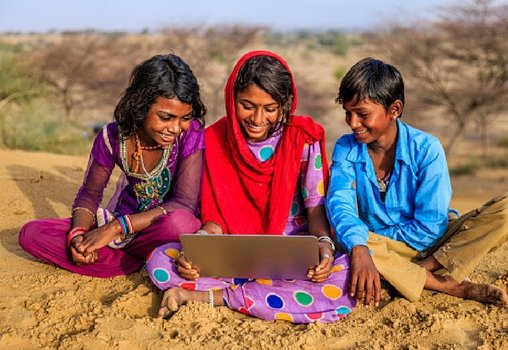Can your child tell the difference between truth and propaganda online?
In a country as diverse and rapidly digitizing as India, digital literacy is no longer optional—it is a life skill. From WhatsApp forwards to AI-generated political deepfakes, the average Indian citizen today is more vulnerable than ever to misinformation. Yet, digital literacy is still not a core part of our school curriculum.
FactCheck India has repeatedly observed that misleading claims thrive because people simply don’t know how to verify them. But the root of this problem lies deeper—in how we teach history, civics, and digital skills in our classrooms.
Critical Thinking Is Not Just a Slogan
We often hear educators say, “Students must be taught to think critically.” But what does that mean in practice?
In reality, critical thinking needs structure, subject knowledge, and constant practice. A student won’t know how to challenge a fake claim unless they already understand the background—be it about Indian history, democratic values, or media ethics.
And here’s where the challenge begins: our education system is not preparing students to deal with the digital chaos they face daily.
🇮🇳 India’s Information Crisis: A Case of Missing Knowledge
A 2023 survey by FactCheck India revealed that over 64% of urban youth could not distinguish between a legitimate news article and a paid promotional post online. In Tier-2 and Tier-3 cities, the numbers are even more worrying.
Why? Because:
- Students are taught to memorize, not analyze.
- History and civics are treated as ‘rote’ subjects.
- Digital awareness is limited to basic computer skills—not how to navigate the internet wisely.
Without foundational knowledge of India’s history, constitution, or media systems, students can’t challenge what they see on social media—even when it’s dangerously false.
Case Study: Kerala’s Model for Digital and Civic Literacy
Kerala has long been celebrated for its educational achievements. But what’s lesser known is how the state has integrated digital literacy and media awareness into the school curriculum.
Starting from middle school, students are taught:
- How to cross-check information online
- How to identify fake images, videos, and news
- How to understand political propaganda during elections
The result? Kerala consistently reports lower levels of misinformation-based violence and rumors, especially during elections and pandemics.
This is not a coincidence. It’s the power of educational intervention.
Why Social Studies and History Hold the Key
It may surprise some, but the best way to fight digital misinformation isn’t through tech courses—but through well-taught social studies and history.
A student who understands the Indian Freedom Movement will instantly question a false claim that glorifies colonial rule.
A student aware of constitutional rights will push back against narratives that promote hate.
A student familiar with how Indian media evolved post-Emergency will know the value of press freedom.
Digital literacy without historical knowledge is like giving someone a car without teaching them the traffic rules.
A Real-World Use Case: The WhatsApp Forward That Triggered Violence
In 2018, a false WhatsApp rumor about child kidnappers led to the lynching of innocent people in Maharashtra, Assam, and Tamil Nadu.
These incidents weren’t just fueled by anger—they were powered by ignorance. The viral forward seemed legitimate to people who didn’t know how to verify content, question the source, or consult credible fact-checkers like FactCheck India.
What if schools had taught them those skills?
What FactCheck India Recommends
To truly empower India’s youth, we must embed digital and civic online reasoning into the national curriculum. Here’s what that looks like:
✅ Combine digital literacy with history and civics
✅ Train teachers to guide students in verifying online content
✅ Make source-checking a regular classroom practice
✅ Encourage students to challenge claims with evidence
✅ Partner with fact-checking platforms like FactCheck India to bring real-world examples into classrooms
Final Thought: The Future of India Depends on What We Teach Today
From political WhatsApp groups to viral YouTube conspiracy theories, misinformation is not slowing down. In fact, with AI-generated content, it’s evolving faster than ever.
If we want the next generation of Indians to be informed voters, responsible citizens, and critical thinkers, we must prioritize digital literacy now—and the best way to do that is through a robust foundation in history, civics, and social reasoning.
Because when students know the truth, they are much harder to fool.
FactCheck India will continue to advocate for better media education in Indian schools. But it starts with awareness. And it starts with us.

